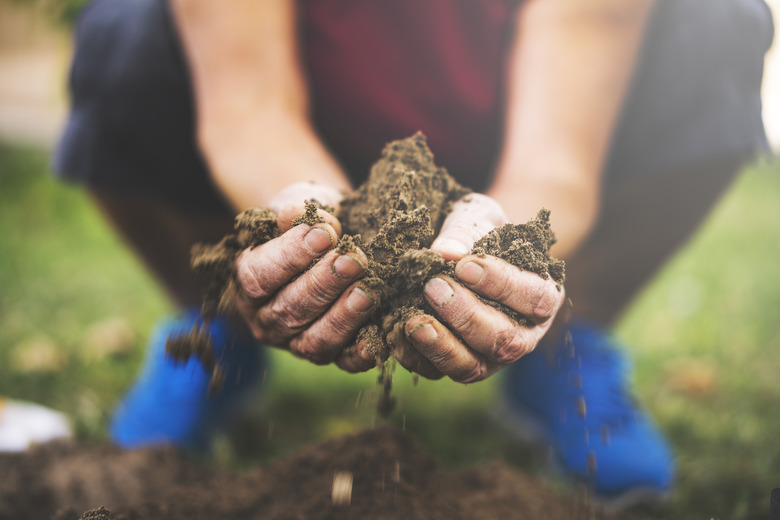How To Make Sandy Loam Soil
Most parts of your life involve balancing different elements, including building good gardening soil. As a gardener, you know that you can't have a healthy, thriving garden without soil that balances density and drainage. Otherwise, garden plants will be sickly and may die early. Building good garden soil is hardly the work of an afternoon, but if you invest the time and energy it takes, you will be rewarded with the soil you need for a happy, productive garden.
So what's the best soil texture for growing plants? It is called "sandy loam."
Characteristics of Loam Soil
Characteristics of Loam Soil
The typical building blocks of soil are three: sand, silt and clay. Each brings its own benefits to plants, but you need a balance of all three to have good sandy loam soil.
Before looking at a technical loam definition, take a moment to think about the various things soil must do to support plant growth. Plant roots live in soil. They delve into it in order to find water and nutrients and also to remain upright and stable in the garden. Clay is a dense soil. It contains nutrients to feed plants and works well to stabilize them. But water doesn't pass through it very easily.
Although some plants grow in water or marshlands, most garden plants do not do well sitting on watery soil, so good drainage is important in a garden soil. Sand, with its large particles, doesn't provide plants with soil stability or nutrients, but it does drain exceptionally well. Silt loam has smaller particles than sand and helps clay and sand mix together.
What Is Sandy Loam?
What Is Sandy Loam?
Loam is usually defined as having about 43 to 50 percent sand, less than 50 percent silt and about 7 percent clay. But any reasonable mixture of these soil types can serve as sandy loam potting soil, also called sandy loam or sandy clay loam.
Sandy loam balances the ingredients of different soils to create the ideal garden soil. It is a well-draining, porous medium, and water flows right through it, avoiding soggy soil. But as the water passes through the soil, it slows down just enough to allow the plant roots to absorb what they need. Sandy loam is crumbly and loose, allowing room for air, also necessary for plant growth.
Building Sandy Loam Soil
Building Sandy Loam Soil
You might think that mixing the correct percentages of clay, sand and silt will whip up ideal garden soil, but that is not the case. Mix clay and sand and the result will be closer to cement than garden soil. You need to improve sandy soil slowly but surely, building it up over time.
The magic wand that turns clay soil into loose, loamy soil is organic matter. Working organic matter into the soil year after year will add nutrients and make clay soil more permeable. It also attracts beneficial insects and other organisms that help make the soil healthy. Organic compost works well for this.
You can make organic compost yourself by starting a compost pile in your backyard, adding kitchen peelings and dry garden detritus and letting it compost over time. Alternatively, you can buy organic compost. In either case, add a layer of it – 2 or more inches – to the top of your soil and work it in before planting. For soils that are severely out of balance, such as heavy clay soils, you may need to do this twice a year. But keep believing. In a few years, your soil will be sandy loam.
